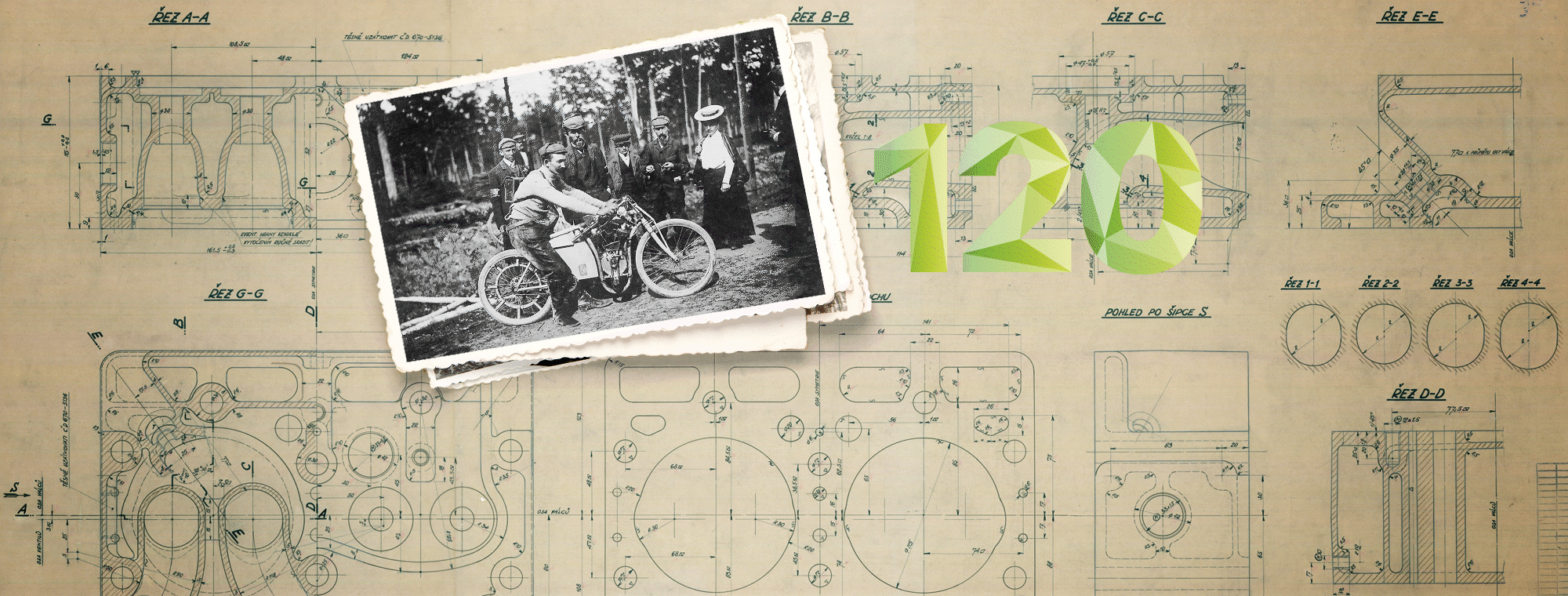In addition to the complete selection of images accompanying this press release, the ŠKODA Storyboard also offers a 32-page brochure and a comprehensive selection of articles and features on various topics from 120 years of ŠKODA Motorsport.
Following the successful era of ŠKODA’s first rear-wheel-drive car, the ŠKODA 1000 MB, the time came for an upgrade in 1969 – and the world was introduced to the ŠKODA 100/110 L models. These differed from their predecessor mainly in their new bodywork. The following year, the designers used the basic version to develop the ŠKODA 110 L Rally and the ŠKODA 110 R Coupé, which was built at the Kvasiny plant. 1972 saw the launch of the ŠKODA 120 S Rally – a sports car that competed more often on domestic race tracks in the 1970s than any other vehicle.
With the ambition to also do well in the overall rankings at international rallies, the B5-category vehicles were introduced in 1974, namely the ŠKODA 180 RS and the ŠKODA 200 RS. These, however, could not obtain homologation for races abroad; their primary mission was to raise the standard of domestic rallies and try out new design elements. Ultimately, all the previously mentioned vehicles were eclipsed by a racing car that combined the best features of them all and went on to become a legend of Czechoslovak motor racing – the ŠKODA 130 RS.
The new ŠKODA 130 RS Coupé (Type 735) made its circuit debut in Most in April 1975. The RS showed what it was capable of less than a month later during a round of the European Touring Car Championship in Brno, where it took 3rd and 4th place in the under-2,000 cm3 class at its debut appearance. At that time, a five-speed gearbox was being used, but a year later, the FIA changed the regulations and the ŠKODA 130 RS had to revert to a four-speed gearbox, to which it remained faithful until the end of its sporting career.
The drivetrain of the ŠKODA 130 RS consisted of a classic, water-cooled four-cylinder engine with OHV valve control, installed behind the rear axle. The first sales version had a power output of 82.8 kW (112.5 hp) at 7,250 rpm, gradually rising to 105 kW (142 hp) at 8,500 rpm as the circuit car developed. The engine with its aluminium cylinder and crankcase had evolved from the series-production four-cylinder engines, but unlike these, it featured a cast-iron cylinder head with eight valves and dry-sump lubrication. The displacement increased from the original 1,289 cm3 to the limit for the under-1,300 cm3 class – exactly 1,299.6 cm3. The greatest strength of the Czechoslovak coupé, however, was its handling; its light and well-balanced design helped drivers not only around the bends but also on straights, in jumps and when they pushed the accelerator to the limit and literally had to fight against the laws of physics. In such situations, the ŠKODA 130 RS always proved to be a reliable partner, and its drivers were able to hold their own even among the more powerful competition.
Unlike the ŠKODA 180/200 RS, the smaller RS could also be driven abroad in Europe, mainly in the West. The ŠKODA 130 RS got off to a very successful start, both in rallying and on the circuits. It opened its first rally season in 1976, and just one year later, it took class victory in the Monte Carlo Rally, finishing 12th overall (driver team Blahna/Hlávka). In the 1978 season, the Zapadlo/Motal driver team finished first in its class and 9th overall in the ŠKODA 130 RS at the Acropolis Rally. One year later, the ŠKODA 130 RS even finished 8th overall in the toughest European rally. Throughout its career, the rally coupé achieved many outstanding successes at the national and international level. In the A2 class under 1,600 cm3, it regularly beat even the stronger competition. Its official career on domestic tracks ended in the 1983 season, but the
ŠKODA 130 RS was still on the road for many years afterwards as a training and autocross vehicle.
The ŠKODA 130 RS not only enjoys a definitive place in rallying but also in the history of the European Touring Car Championship. The brand from Mladá Boleslav completed the full season in this prestigious series for the first time in 1978. Until then, the focus had been on the circuits of the former Eastern Bloc. At its very first appearance, ŠKODA took third place in the brand classification, competing against renowned manufacturers. One year later, the ŠKODA 130 RS achieved second place in the overall standings, and in 1980, third place behind Audi and BMW, as well as first place in its class. While it was widely believed that this was the most a circuit coupé from Czechoslovakia could achieve, the ŠKODA 130 RS was about to achieve its greatest success: in 1981, the Czechoslovakian racing car with a 1.3 OHV engine fought its way to the top of the overall standings after a tough season, and ŠKODA won the title in the European Touring Car Championship. The competitors were shaking their heads in disbelief, and the drivers of the ŠKODA 130 RS, Zdeněk Vojtěch, Břetislav Enge, Jan Šenkýř, Petr Martinovský, Josef Michl and a few others – as well as the cars themselves – were in the spotlight of the European sports media.
Today, both the rally version and the circuit version of the ŠKODA 130 RS are prominent stars at the ŠKODA Museum and regularly take part in commemorative events. Almost 200 original vehicles were built between 1975 and 1980, and several dozen were also assembled from original parts in the Svazarm (a paramilitary/Boy Scout organisation in Communist Czechoslovakia).















































